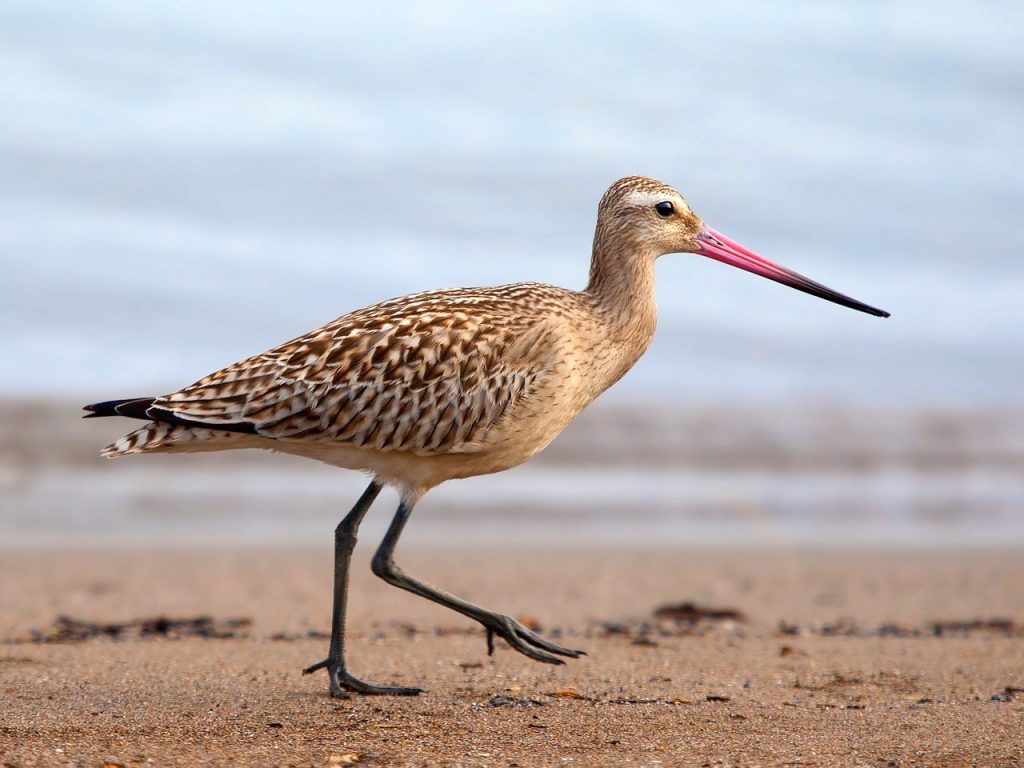 At least 4,000 species of birds across the globe are long-distance migrants, totaling approximately 40% of the world’s population. Relying solely on the power of their own small bodies, they trek hundreds (& in some cases thousands) of miles over open water & inhospitable terrain to reach their wintering grounds.
At least 4,000 species of birds across the globe are long-distance migrants, totaling approximately 40% of the world’s population. Relying solely on the power of their own small bodies, they trek hundreds (& in some cases thousands) of miles over open water & inhospitable terrain to reach their wintering grounds.
Indeed, birds are in their own class of rad. And if you’re looking for another reason to adore them, look no further than these 8 extraordinary feats of fall migration.
- A tracking study published by researchers at Bangor University in 2015 revealed that the Bar-headed Goose can reach heights of more than 23,000 feet during Himalayan migrations – where there’s less than 10% of the oxygen found at sea level. Some anecdotal observations even place these birds flying above Mt. Everest (elevation 29,029′). What’s more, they don’t soar nor take advantage of tailwinds. Instead, they appear to flap their wings the entire time – sometimes up to 17 hours straight.
- The longest migration route belongs to the Arctic Tern, which can cover up to 25,000 miles one way from its breeding grounds in the Arctic to its wintering grounds in the Antarctic. Repeating this annual trip during their lifespan of 15 to 30 years, they cover the equivalent of three times the distance to the moon & back.
- The Great Snipe has been clocked at speeds of up to 60 mph during migration, which researchers determined was the result of its own strength & endurance rather than the use of strong tailwinds.
- The Blackpoll Warbler, which weighs little more than two quarters, tackles a three day 1,600-mile nonstop flight from the coast of the Northeast to the Caribbean – at which point they fuel up for the last leg of their trip to South America. Given their fat-stores, some scientists have joked that they get “720,000 miles to the gallon!“
- In the realm of long-distance travel, researchers found that the Bar-tailed Godwit completes its eight-day 6,800-mile trip in a one step. In case you’re wondering, yes, you read that right – that’s eight straight days without stopping to fuel or rest, making it one of the most impressive shows of physical endurance on the planet.
- While billions of birds begin migration each year, not all of them complete it. Unfortunately, millions of birds are killed each year in collisions with communications towers & tall buildings, with some scientists claiming that collisions with these human-built structures are the single largest cause of migratory bird mortality in North America. To learn more about this issue, visit the Fatal Light Awareness Program.
- Birds have the ability to reach their wintering grounds each fall and return to the area where they hatched to raise their own young in the spring – all without a handy smartphone to guide them. Though their secrets aren’t fully understood, they can gather compass information from the sun, stars & Earth’s magnetic field. They also cue in on visual landmarks, including watercourses, coastlines & even tall buildings. These visual cues may be essential, but as noted above, in some cases they can become deadly.
- Hyperphagia, or excessive eating, allows migratory birds to increase their fat stores in preparation for the trip. Blackpoll Warblers often double their body weight from an average of 11 grams to 21 grams just before migration. And Ruby-throated Hummingbirds, which travel 500 to 600 miles over the open water of the Gulf of Mexico, also double their usual weight of 3 grams to 6 grams.
- Bonus! Consider this – for you to tackle some of these physical feats, you’d need to run the equivalent of 4-minute miles nonstop for 80 hours. The fastest (human) mile ever recorded was run by Hicham el Guerouj in 1999, who covered it in 3:43:13. You’d have to sustain a similar pace for over 3 days without stopping to hang with the world-class athletes in Class Aves.
Want to learn more?
If you’ve ever wondered what migration looks like across the Western Hemisphere, check out this nifty gif from the Cornell Lab of Ornithology, which tracked 118 species on their journey across the Americas.
If you’re interested in seeing migration in action, visit Cornell’s Birdcast to see what’s on the move or visit a local hawkwatching site near you.
And if you live in or are planning to visit southern New Hampshire between September 1 and November 15, check out the raptor observatory on Pack Monadnock in Miller State Park. You can enjoy a superb hike via one of the trails, or if you’re with someone with limited mobility, the site is also ADA accessible.